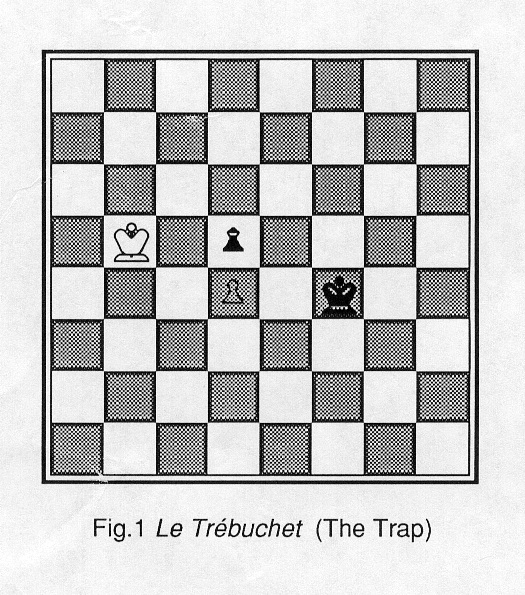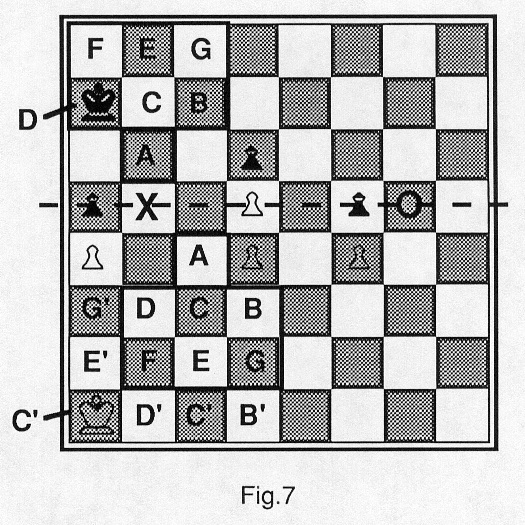Chess Match (15)
By:
April 13, 2010

From this, it is clear that White must leave the a-file on his first move (in the original position) and never return to it. An opening move of 1. al-a2 would lead to a draw, since Black would take the secondary heterodox opposition in reverse with the reply 1. …a7-b8 (D-E), leading to a drawn game. In conclusion, it will be observed that the most Black can hope for is a draw. Given accurate play by White, Black can only succeed in delaying the progress of events.
This description of an extremely rare position that can arise in the endgame of a game of chess appears in the 1932 book Opposition et Cases Conjugées sont Reconciliées (Opposition and Sister Squares are Reconciled), which was coauthored by Marcel Duchamp.

Andrew Hugill argues, in fine paranoid style, that “the unique horror of the position described above finds expression in Beckett’s play [Fin de Partie (Endgame)],” in which Black (Hamm) haphazardly delays and frustrates White (Clov).” Hugill points out that Beckett and Duchamp were friends, and that Beckett followed Duchamp’s newspaper chess column.
An example of Hugill’s analysis:
The opening description of the set and Clov’s actions establish the Duchamp/Halbertadt position. Grey light is reflected from the surface of a chessboard. The two windows represent the two poles of the position. This is confirmed later in the play when Clov looks through both windows and describes the scene for Hamm’s benefit:
“Light black. From pole to pole.”
(“Light black” presumably describes the alternation of white and black squares). The two ashbins, homes of Nagg and Nell, symbolize the immobile and redundant pawns. Some medieval chess-sets contain pawns that resemble modern ashbins.
Happy birthday, Samuel Beckett.
